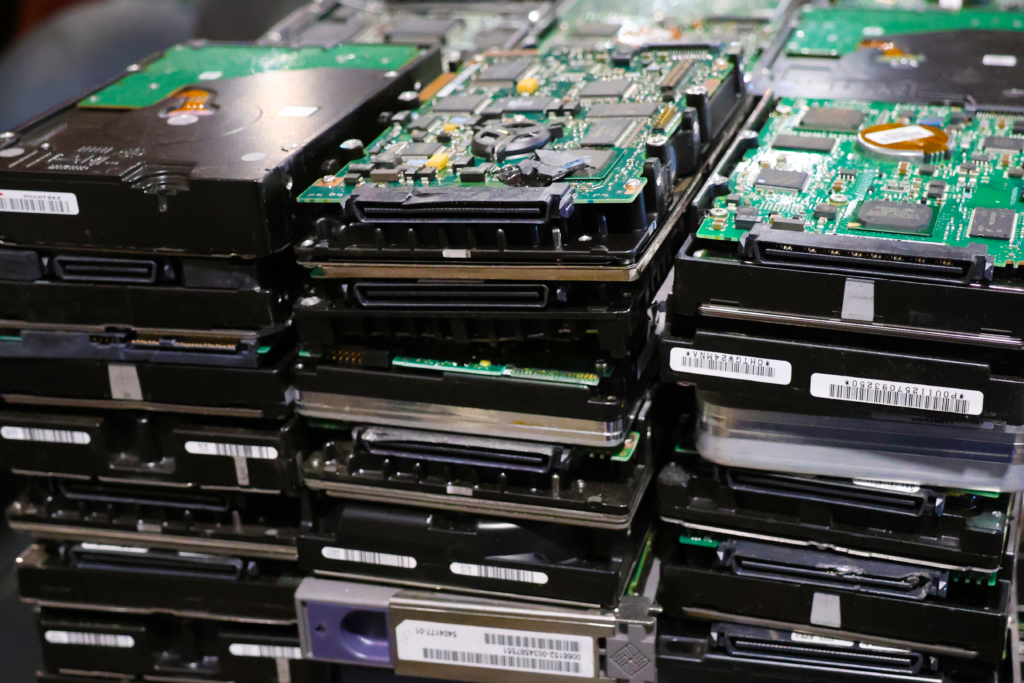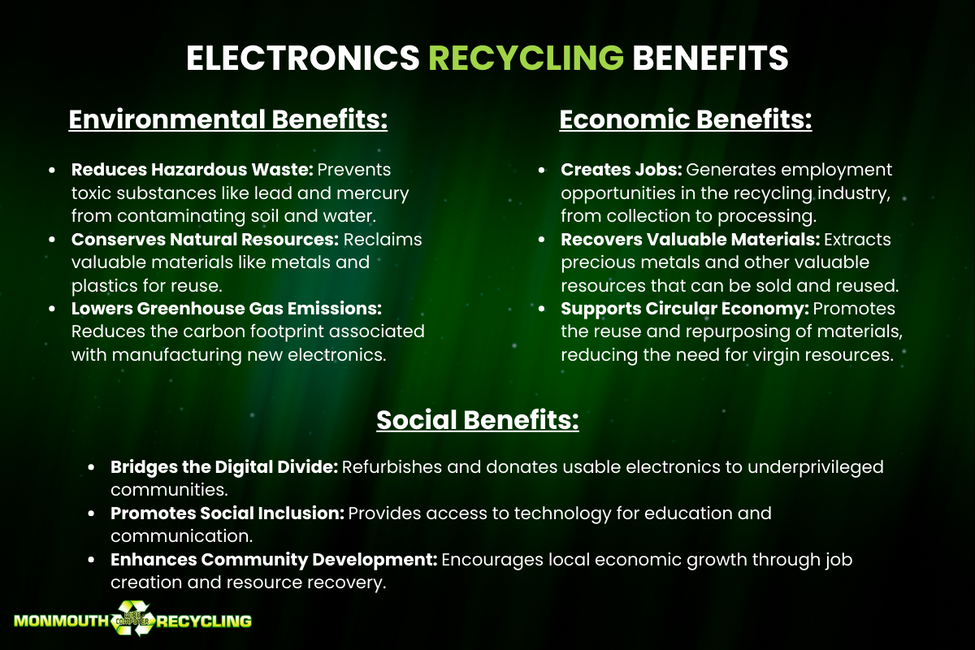Brief Overview of the Growing Amount of Electronic Waste Globally

In our technologically driven world, electronic devices have become central to our daily lives. However, with rapid innovation and shorter product lifecycles, the question are electronics recyclable becomes increasingly important as the volume of electronic waste (e-waste) grows at an alarming rate. According to the Global E-waste Monitor, approximately 50 million tons of e-waste are generated worldwide annually, making it one of the fastest-growing waste streams. This increasing pile of discarded electronics poses significant environmental and health risks, emphasizing the urgent need for effective waste management strategies.
The surge in e-waste is primarily due to the burgeoning consumption of electronic devices like smartphones, computers, and TVs, coupled with their decreasing lifespan. The United Nations predicts that e-waste volumes could escalate to 120 million tons per year by 2050 if current trends continue (Platform for Accelerating the Circular Economy, 2019). This escalation not only represents a colossal waste of scarce resources but also a growing environmental hazard.
Are Electronics Recyclable? Concept of Electronic Recycling and Its Relevance
Are electronics recyclable? Yes, electronic recycling, or e-recycling, involves the process of recovering material from old devices to be used in new products. As a cornerstone of sustainable waste management, electronic recycling is critical for mitigating the negative impacts of e-waste. This practice not only conserves natural resources but also reduces the environmental burden of mining for new materials and the energy consumed in manufacturing processes.
Recycling electronics is particularly relevant today as it addresses both environmental sustainability and economic viability. By extracting valuable materials from outdated or broken devices, we can reduce the environmental footprint of producing new electronics and support a circular economy. Moreover, electronic recycling is instrumental in decreasing landfill usage, preventing toxic chemicals from leaching into the environment, and reducing greenhouse gas emissions.
What are Electronics Made Of?
Breakdown of Common Materials Found in Electronic Devices (Metals, Plastics, Glass)

Electronic devices are complex assemblies made up of numerous materials, many of which are recyclable. Metals such as copper, aluminum, and iron are commonly found in electronic circuits and components. These metals are highly valuable and can be efficiently recycled to produce new products, reducing the need for virgin material extraction.
Plastics make up a significant portion of the housing and insulation components in devices. While more challenging to recycle than metals, advances in technology have improved the recycling rates of certain types of plastic. Glass, particularly from screens and monitors, can also be recycled, although it often requires specialized processes due to the presence of lead in older cathode ray tube (CRT) screens.
Recyclable Items
- Computer Equipment
- Whole Systems: Whole computers, laptops
- Peripherals: Monitors, keyboards, mice, printers, copiers, scanners
- Components: Hard drives, power supplies, floppy drives, CD-ROM drives, CPUs
- Networking and Server Equipment
- Networking Devices: Mainframes, servers, switches, hubs, modems
- Telecom and Security Equipment: Telecom equipment, security equipment
- Electronics and Audiovisual
- Consumer Electronics: TVs, telephones, radios, stereo components, speakers, VCRs, DVD players, cameras
- Laboratory and Medical Equipment
- Lab Equipment: Test equipment, laboratory equipment
- Medical Devices: Medical equipment
- Components and Accessories
- Electronic Components: Circuit boards, battery backups
- Batteries and Power Supplies: Batteries, transformers
- Wiring and Cables: Various types of wire & cables
- Recyclable Materials
- Metals: Copper, brass, steel, aluminum, motors, radiators
- Plastics: Various plastics
- Miscellaneous
- Media and Other Items: Old vinyl records, X-rays
- Household Appliances: Air conditioners, microwaves
Check out our complete list of recyclable items here.
Explanation of Hazardous Materials Like Lead, Mercury, and Cadmium
Electronics often contain hazardous materials that pose serious health and environmental risks if not properly managed. Lead, found in solder and CRT screens, can cause neurological damage and is toxic to the environment. Mercury, used in small amounts in fluorescent backlights, is highly toxic and can damage the nervous system and kidneys. Cadmium, found in rechargeable nickel-cadmium batteries, is carcinogenic and can accumulate in and poison aquatic ecosystems.
The presence of these hazardous materials is a compelling reason for the rigorous recycling of electronics. Proper recycling ensures that these dangerous substances are handled safely and do not end up contaminating soil, water, and air, thus protecting ecological and human health.
By understanding what electronics are made of and the importance of responsibly managing these materials, we can better appreciate why electronic recycling is not just relevant but essential. The question, “Are electronics recyclable?” is not just a query—it’s a call to action for environmental stewardship and resource conservation.
How Are Electronics Recycled?
Step-by-step Description of the Electronic Recycling Process
The process of recycling electronics is intricate and involves several steps, each crucial for ensuring that materials are recovered efficiently and safely.
Collection and Transportation
The first step in the recycling of electronics starts with collection. Various programs and services collect old electronics from individuals, businesses, and public drop-off centers. These collected items are then transported to recycling facilities. The logistics require careful planning to maximize the efficiency of collection and minimize transportation costs, thereby reducing the carbon footprint of the process.
Manual Sorting and Disassembly
Once at the recycling facility, the electronics undergo manual sorting based on type and condition. This step is vital because it determines which items are suitable for refurbishment or need complete disassembly. Workers then manually disassemble the devices, carefully separating hazardous components like batteries and capacitors, which require special handling to prevent environmental contamination.
Mechanical Shredding and Separation
After disassembly, the electronics are shredded into small pieces. This makes it easier to sort the different materials using advanced mechanical processes. Magnets, eddy currents, and other separation techniques are used to separate metals from plastics. This separation is crucial for the next steps in the recycling chain.
Advanced Separation Technologies for Recovering Precious Metals
The final step involves using advanced technologies to recover precious metals like gold, silver, and palladium from the sorted electronic scraps. Chemical processes, such as acid extraction or electrolysis, are employed to dissolve and extract these valuable metals. This recovery is not only beneficial for the environment but also helps reduce the need to mine new materials.
Are Electronics Recyclable? Benefits of Recycling Electronics

Environmental Impact: Reduction in Hazardous Waste and Conservation of Natural Resources
Recycling electronics significantly reduces the volume of hazardous waste in landfills, preventing toxic substances like lead and mercury from polluting the environment. Additionally, it conserves natural resources by recovering valuable materials, such as metals and plastics, which can be reused in the production of new products, reducing the need for virgin resources.
Economic Advantages: Job Creation in the Recycling Industry and Recovery of Valuable Materials
The electronics recycling industry creates numerous jobs, from manual collection and sorting to more specialized positions in processing and material recovery. These jobs contribute to economic growth and community development. Furthermore, the recovery of precious metals and other valuable materials from old electronics can be highly profitable and promotes a circular economy.
Social Benefits: Reducing Digital Divide by Refurbishing and Donating Usable Electronics
Refurbishing and donating electronics play a crucial role in reducing the digital divide, allowing economically disadvantaged individuals and communities access to technology that would otherwise be unaffordable. This not only supports education and communication but also promotes social inclusion.
Challenges in the Recycling of Electronics
Technological: Difficulty in Disassembling Products Glued or Soldered Together
Modern electronics are often designed with assembly methods that make disassembly challenging. Products glued or soldered together cannot be easily dismantled for recycling, posing significant hurdles to effective recycling practices.
Economic: High Costs Associated with the Recycling Process
The economics of recycling electronics is a major challenge. High labor costs, advanced technology requirements, and fluctuating market prices for recovered materials can make electronic recycling less economically viable without governmental subsidies or support.
Legal and Regulatory: Varying Laws Across Countries and States that Affect Recycling Practices
The legal and regulatory frameworks governing electronic waste recycling vary widely between countries and even among states within countries. These disparities can lead to inconsistencies in how e-waste is managed, complicating efforts to establish a globally harmonized approach to electronic recycling.
By addressing these challenges, we can improve the efficiency and efficacy of electronic recycling processes, ensuring that the question, “Are electronics recyclable?” is met with a resounding “Yes,” accompanied by effective actions and policies.
Recycling electronics is vital for reducing e-waste and its environmental impact, conserving natural resources, and preventing pollution. Every individual can make a difference by responsibly disposing of old electronics. For assistance and to ensure your devices are recycled properly, contact Monmouth Computer Wire Recycling. Together, we can contribute to a sustainable future and a healthier planet.

